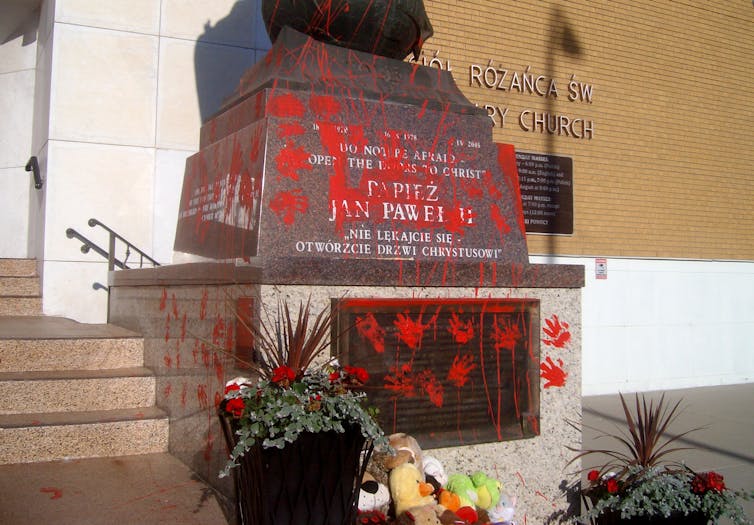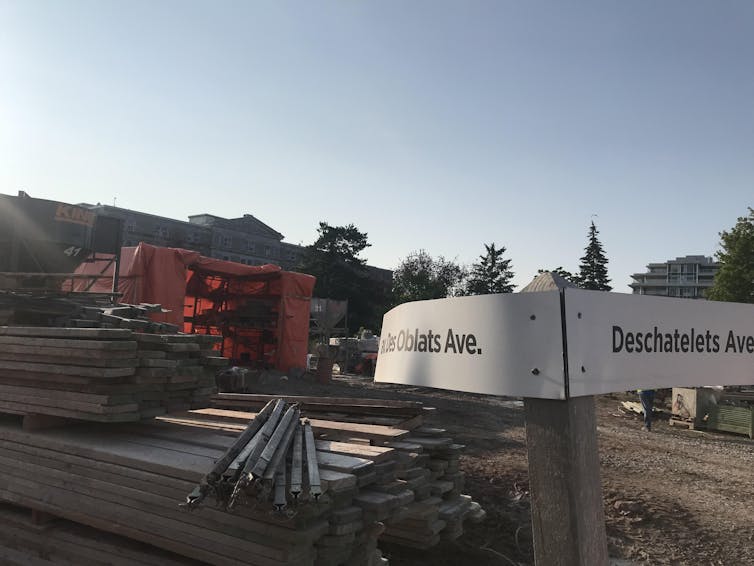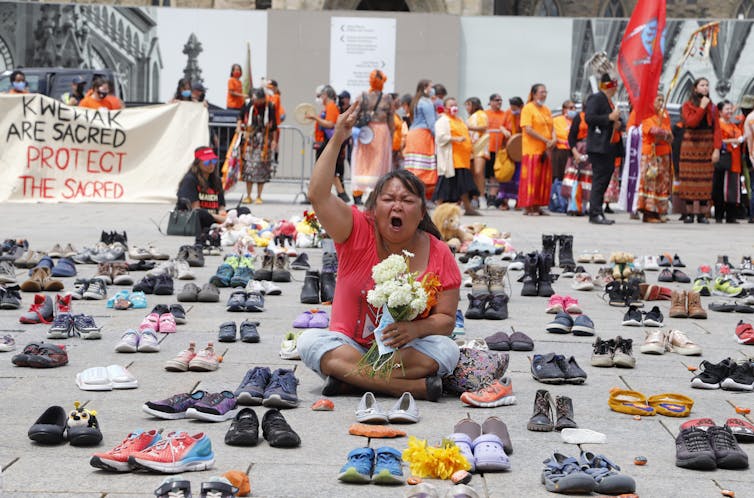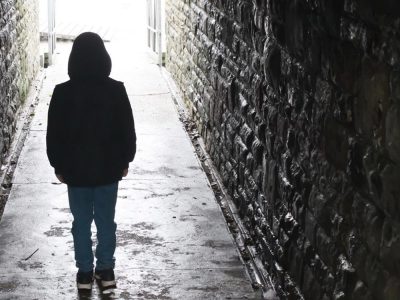By Jennifer Henderson
This article is republished from The Conversation under a Creative Commons licence. All photos provided by The Conversation from various sources.
The idea of Canada as an expansive crime scene is neither unfamiliar nor disorienting to Indigenous people.
The use of ground-penetrating radar to reveal unmarked graves at or near the sites of former residential schools does what personal narratives of physical, emotional and sexual abuse at residential schools and 94 Calls to Action were seemingly not enough to do. They confront the mainstream discourse of reconciliation with some tougher questions about criminal accountability, unpaid debts, settler-state legitimacy and the nature of the ground we stand on.
If the possibility of prosecution on the horizon is something that, up to this point, Canada has managed to render unthinkable, or at most not in the public interest, then what does it mean for flags to be lowered as a demonstration of shared grief? Or for ministers to promise support for “affected communities” to “get on with the healing?”
The Truth and Reconciliation Commission’s (TRC) final report, released six years ago, established that Canada’s federal government designed and orchestrated the institutionalized genocidal violence of the Indian Residential School (IRS) system.
The location of unmarked graves today highlights some of the limitations of a TRC that did not have the power to subpoena witnesses or documents.
While a TRC working group called the Missing Children and Unmarked Burials Project was formed to research death, disease and disappearances and to collaborate with communities in the identification and commemoration of gravesites, in 2009 they asked the federal government for additional funds to carry out this work, but the request was denied.
The figure of a perpetrator
As this country processes the findings of unmarked graves, public discussion has sketched the figure of a perpetrator around the Catholic Church. It is not hard to see why this figure is taking shape.
It was a specific Catholic order, the Missionary Oblates of Mary Immaculate, that ran the Kamloops, Marieval and Kuper Island residential schools, several associated with recently located unmarked graves.
The Catholic Church ran more schools than any other single church denomination.

THE CANADIAN PRESS/Rob Drinkwater
There is the unfulfilled call for a papal apology, and the failure of Canadian Catholics to raise more than a fifth of the $25 million that was the Catholic Church’s share of the compensation to be paid to IRS survivors. This commitment seems to have been abandoned on the basis of decentralized church structure and poverty, even though Canadian Catholics have been raising millions for new buildings.
The loophole of “best efforts” was written into the language of the Indian Residential School Settlement Agreement (IRSSA). A supplementary part of the IRSSA allowed the Catholic Church to pay some of its compensation to survivors in the form of “in-kind services,” such as counselling.
So, it’s not surprising that burning Catholic churches dot the landscape of Canada, as if we’ve reached the conclusion of some classic gothic novel in which the villain is swept away in a fury of wind and fire.
The inferno seems a fitting end for the criminally hypocritical.
In Ottawa (unceded Algonquin territory), an imposing monastery constructed by the Oblates of Mary Immaculate in 1885 is the centrepiece of a 26-acre redevelopment project called Greystone Village.
The “Oblates Land” was sold to a developer in 2014 for $32 million. In 2000, the order proposed to transfer assets to the federal government in exchange for the government’s assumption of its liability in lawsuits by residential school survivors. That proposal was later replaced by the IRSSA, the terms of which the Catholic Church has failed to fulfil.

(Jennifer Henderson), Author provided
Elements of gothic fiction
But the current focus in public culture on the Catholic Church is conveniently narrow and almost intuitively familiar in its reference to gothic narrative conventions — perverse actors, imprisoning structures, a distant time, a culturally distant and religious otherness.
Secret burials are the stuff of gothic fiction, but these gothic events actually happened, and in great numbers. Indigenous children were moved to sites of abuse, sadistic discipline and neglect. When the conventions of the gothic genre are deployed to tell the story of residential schools, they produce an inappropriate sense of events being both distant and past. Images of robed priests and church ruins are just too comfortable for many settler Canadians.
For those of us (settlers) implicated in Indigenous displacement and containment through our privileges, the gothic is also a reassuring projection. It wasn’t us; it was the Catholic other.
The gothic narrative about the moral corruption of the Catholic other has a deep-seated familiarity for much of settler Canada. It is generically familiar and intuitively just-seeming — especially for white, Protestant or secular Canadians, like myself — in its channelling toward the Catholic Church of the complex sensations of horror, disgust, shame and anxiety provoked by the unmarked graves of children.
Taking shelter in this narrative does not have to be deliberate; the genre is a habit of mind — and a self-serving one.
White capital and its expansion
The IRS system was made real through a contracting-out arrangement. The churches provided efficiencies: cheap labour and what the Davin Report called the necessary moral and ideological zeal.
These capacities were resourced, deliberately, by a settler-state in the service of white capital and its expansion. The Enlightenment principle of the separation of church and state is a flexible thing, especially in the federal government’s delegation of the day-to-day running of IRS’s to those with zeal for the work.

THE CANADIAN PRESS/ Patrick Doyle
For many settlers, the feelings of outrage at the vile crimes of villains — ready-made by a familiar narrative genre — may shield more complex emotional knots and investments. Investments both emotional and material, in the land and resources of what we now call Canada.
The argument I am making here is about non-Indigenous reckoning with the mundane and normalized, as well as the truly gothic violence of settler-state institutions and ongoing public-private collaborations in Indigenous displacement.
This is not a defence of the Catholic Church in Canada. The shielding of individuals, records and funds must stop. But it is incumbent upon settlers not to take cover under the genre of the gothic, which the current focus on the Catholic Church offers. Some of those still-to-be found residential school records are about contracting-out arrangements; they have the hands of the representative institutions of settler Canadians all over them.
As residential schools were just one tool for clearing the land and building wealth from its commodification, this isn’t just about the historical wrongs of the Catholic Church or Indigenous Affairs or the state; it’s about the foundations of Canadian capital.
If you are an Indian Residential School survivor, or have been affected by the residential school system and need help, you can contact the 24-hour Indian Residential Schools Crisis Line: 1-866-925-4419
![]()
Wednesday, July 21, 2021 in The Conversation
Share: Twitter, Facebook



